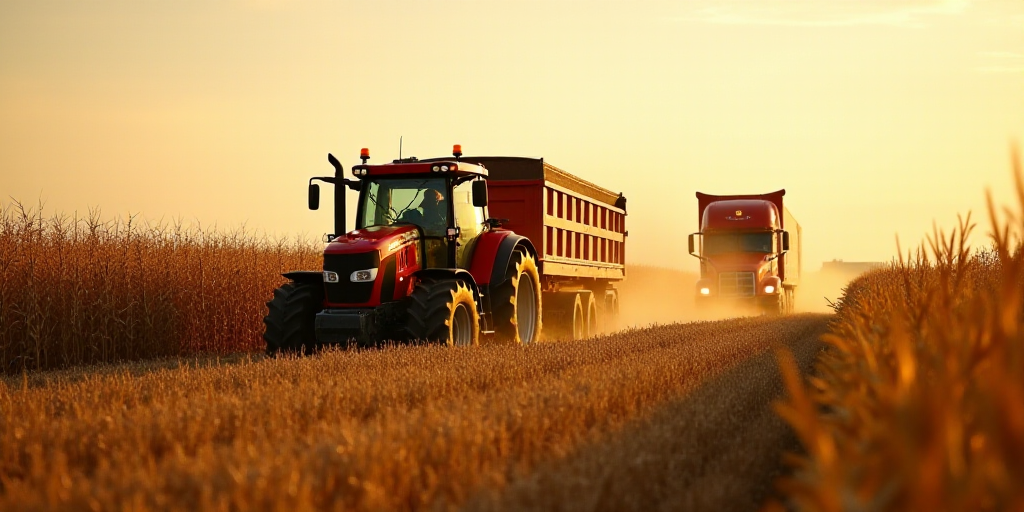Introduction to the U.S. Crop Tour
The annual Pro Farmer Crop Tour, which evaluates corn yields and assesses soybean production potential across seven U.S. states, has sparked volatility in soybean and corn futures trading on Monday.
Market Reactions to the Crop Tour
According to industry operators, both Chicago soybean and corn futures experienced significant fluctuations as traders awaited the tour’s results. The U.S. Department of Agriculture (USDA) had previously forecasted a record corn harvest in the United States, adding to the anticipation surrounding this year’s crop tour.
Impact on Soybean and Corn Futures
The expectations of a bountiful corn harvest, as suggested by the USDA’s projections, have put downward pressure on soybean and corn futures. The favorable weather conditions in the U.S., coupled with concerns over low export demand, have further contributed to the downward trend.
Wheat Futures Also Decline
Wheat futures also experienced a decline, falling by 2 cents to $5.25 per bushel, due to technical selling. However, the recent surge in export demand has provided underlying support.
Key Market Movements
- Corn Futures: The most active corn futures in Chicago rose 0.25 cents to $4.0550 per bushel.
- Soybean Futures: The most active soybean futures gained 2.25 cents to $10.4475 per bushel.
- Wheat Futures: Wheat futures dropped 2 cents to $5.25 per bushel.
Contextual Factors Influencing the Markets
The ongoing trade tensions between the United States and its primary buyer, China, continue to weigh on soybean and corn futures. Meanwhile, the situation in Ukraine remains uncertain, with President Volodymyr Zelenskyy stating his willingness to negotiate an end to the conflict with Russia before upcoming talks with U.S. President Trump.
Ukraine’s Role in Global Grain Markets
As a significant exporter of grains, Ukraine’s political climate can influence global grain markets. President Zelenskyy’s openness to negotiations may impact the geopolitical landscape, potentially affecting grain export dynamics between Ukraine, Russia, and other key players.
Expert Opinions on Market Volatility
Jack Scoville, vice president of Price Futures Group, commented on the market’s uncertainty: “I don’t think wheat is going to see a lot of ups and downs… We’ll be watching developments in the Black Sea region, but the situation is quite confusing at the moment.”
Key Questions and Answers
- What is the U.S. Crop Tour? The annual Pro Farmer Crop Tour evaluates corn yields and assesses soybean production potential across seven U.S. states.
- Why are soybean and corn futures volatile? The anticipation of a record U.S. corn harvest, coupled with favorable weather conditions and concerns over low export demand, has contributed to the market’s volatility.
- How do global political events impact grain markets? Political developments, such as the ongoing trade tensions between the U.S. and China and the situation in Ukraine, can influence grain export dynamics and, consequently, grain futures prices.






